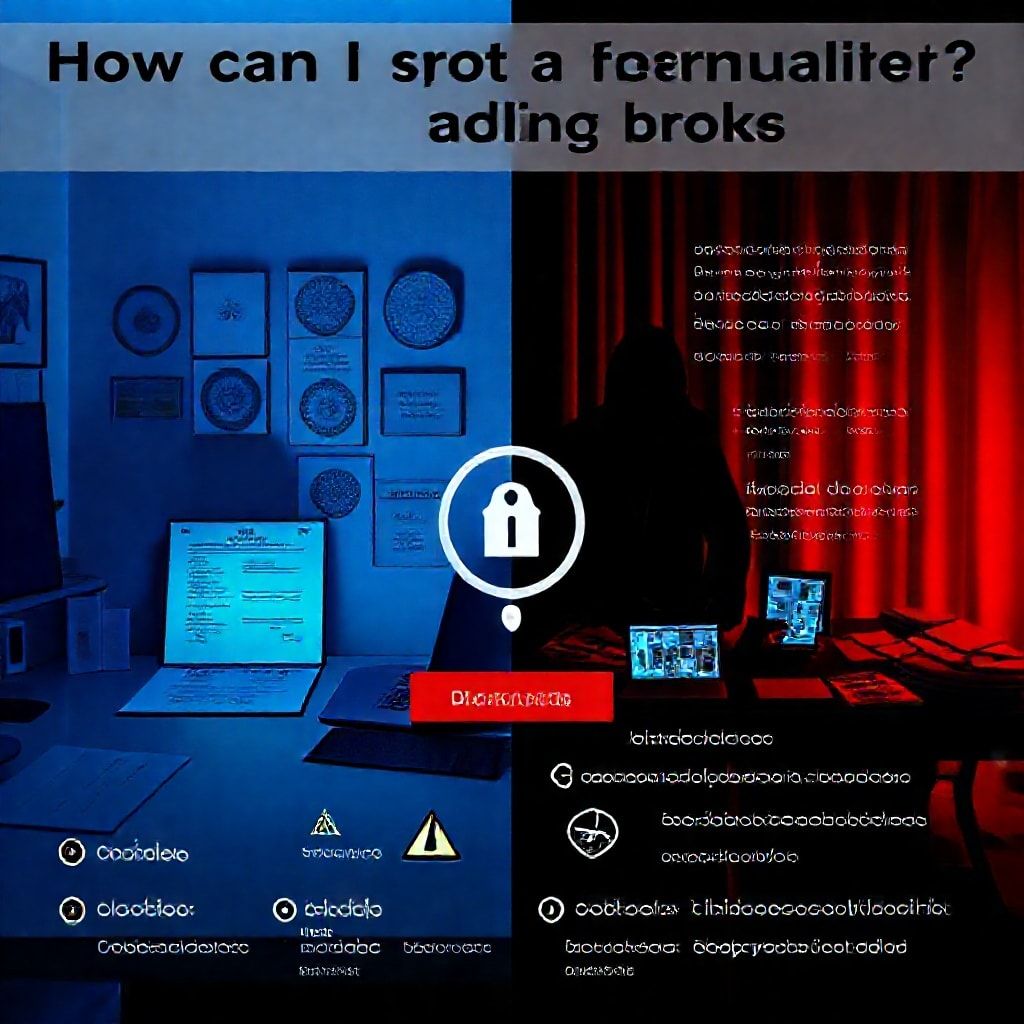How can I spot a fraudulent trading broker?
How Can I Spot a Fraudulent Trading Broker?
Introduction
In the fast-paced world of trading, scammers hide behind glossy ads and fake testimonials just long enough to reel you in. You’re not alone—lots of legitimate brokers exist, but a handful of bad actors exploit curiosity and urgency. The goal isn’t to fear-mypeople, it’s to empower your due diligence: verify, test, and only commit when you’re confident in the setup. Here’s a practical guide to spotting fraud before you hand over funds.

Red flags to watch
- License and registration gaps: a real broker will publish a clear regulator license number and offer direct links to official regulator pages. If the site dodges regulator names, or uses generic “financial services provider” wording, walk away.
- Withdrawals and deposits behavior: shiny promises are easy; hard withdrawals are telltale. If funds sit in “holding accounts” or withdrawal requests trigger delays, that’s a red flag.
- Opaque pricing: unclear spreads, hidden commissions, or sudden changes without notice signal trouble. A legitimate outfit will publish a transparent fee schedule and post auditable trade histories.
- High-pressure tactics: “limited-time” offers, guaranteed returns, or pushy upsells to riskier products tend to mask risk and fraud.
- Dubious platform or branding: counterfeit versions of MT4/MT5, or a platform that looks polished but has fake login flows, is a warning sign. Cross-check the platform’s real-versus-clone status.
- Anonymity and fake contact options: no physical address, empty phone lines, or vague corporate entities make it easy to disappear after trouble.
- Unrealistic leverage: extremely high leverage with promises of limitless gains rarely ends well. If it sounds almost too good to be true, it probably is.
Signs of legitimacy and smart due diligence
- Regulated status and disclosures: verify the license directly on the regulator’s site. A legitimate broker lists custodians, segregated client funds, and clear risk disclosures.
- Transparent operating details: clear fee schedules, trade execution policies, risk controls, and a public compliance stance build trust.
- Real-world accountability: a registered corporate entity, verifiable physical address, responsive helpdesk, and access to a compliance officer or risk team.
- Independent reviews and audits: look for third-party audits, reputable reviews, and non-conflicted testimonials. Don’t rely on testimonials hosted on the broker’s site.
Multi-asset landscape and practical checks
- Forex and indices: compare spreads across reputable feeds, test liquidity in a demo, and ensure slippage is reasonable during stressed markets.
- Stocks and options: confirm access to the exchanges you care about, and review the broker’s order routing and fees for options.
- Crypto and commodities: check custody practices, insurance, and whether client funds are segregated; assess counterparty risk and withdrawal speed.
- Due diligence workflow: start with a demo account, request a formal withdrawal, review the full fee schedule, and verify all counterparties and liquidity providers.
Tools, risk controls, and reliability
- Tech toolbox: enable two-factor authentication, use strong unique passwords, and prefer brokers with robust security practices and open API controls.
- Risk discipline: define position sizing, set stop-loss rules, and limit exposure to any single asset class. Use documented leverage guidelines rather than chasing impressive but risky returns.
- Charting and analytics: rely on trusted charting tools and backtested signals; insist on full trade history access to audit performance.
DeFi, smart contracts, and futures
- Decentralized finance promises transparent settlement and non-custodial custody, but it comes with its own hazards: smart contract bugs, oracle failures, and fragmented liquidity. Audits help, but diversify and start small.
- AI-driven and smart-contract trading point to a future where signals and execution are faster, yet model risk and data quality matter. Expect tighter integration between on-chain data, risk analytics, and automated execution.
Takeaways and a forward-looking note
How can I spot a fraudulent trading broker? Verify regulator status, demand clarity on fees, test withdrawals, and audit platform credibility. The market landscape is expanding—from regulated multiasset trading to DeFi and AI-enabled systems. The smarter path blends robust risk controls, reliable tech, and a healthy skepticism about hype. Slogan to keep in mind: Spot fraud fast, protect your capital, and trade with confidence.